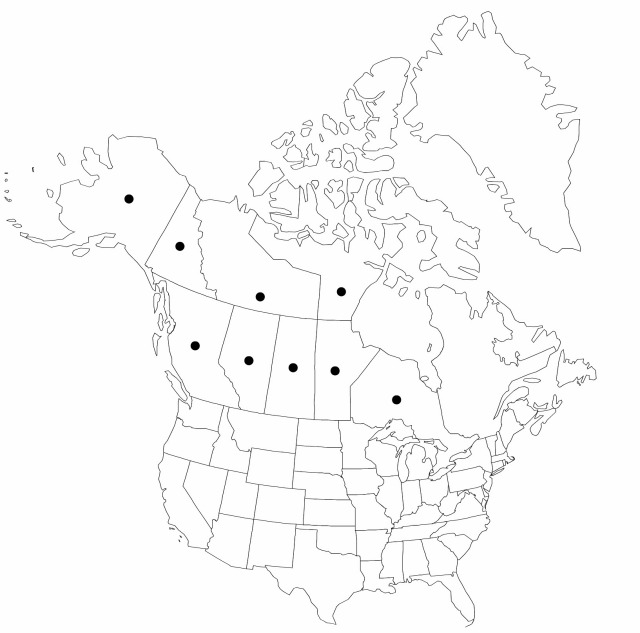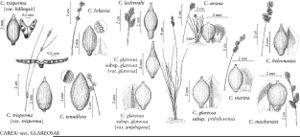Carex loliacea
Sp. Pl. 2: 974. 1753.
Plants loosely cespitose; rhizomes long, slender. Culms erect, weak, 15–40 cm. Leaves: sheaths pale-brown abaxially, inner band tight, hyaline, truncate; ligules short, as wide as long; blades pale green, flat, 5–15 cm × 1–2 mm. Inflorescences erect, 1–2.5 cm × 4–6 mm; proximal bracts scalelike, usually 2–8 mm, shorter than spikes. Spikes 2–5, gynecandrous, the proximal remote, proximal 2 at least 1 cm apart, the distal approximate, with 3–8 perigynia, suborbicular. Pistillate scales white-hyaline with green midrib, ovate, clearly shorter than perigynia, apex obtuse. Perigynia pale green or pale-brown in age, conspicuously many-veined, obovate-elliptic, 2.5–3.5 × 1.25–1.5 mm, subcoriaceous; beak absent. Achenes redbrown, oblongelliptic, 1.75 × 1 mm, glossy. 2n = 54.
Phenology: Fruiting Jun–Jul.
Habitat: Mires, wet forests, mossy stream banks, lowlands
Elevation: 0–1000 m
Distribution

Alta., B.C., Man., N.W.T., Ont., Sask., Yukon, Alaska, Eurasia
Discussion
Selected References
None.
Lower Taxa
"shortened" is not a number.
